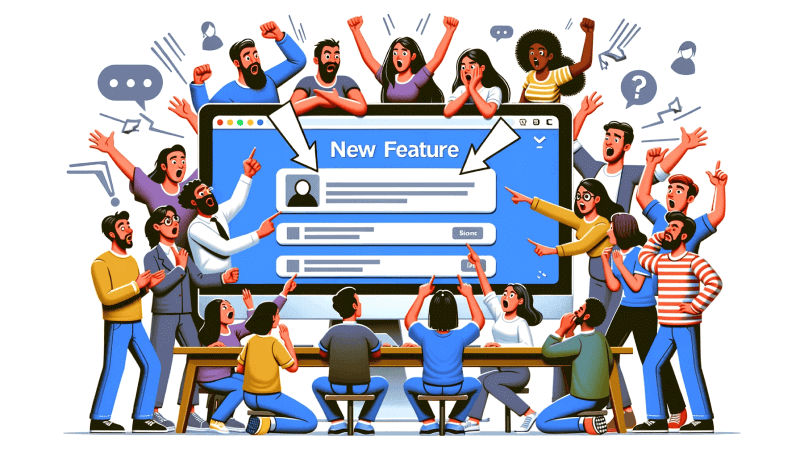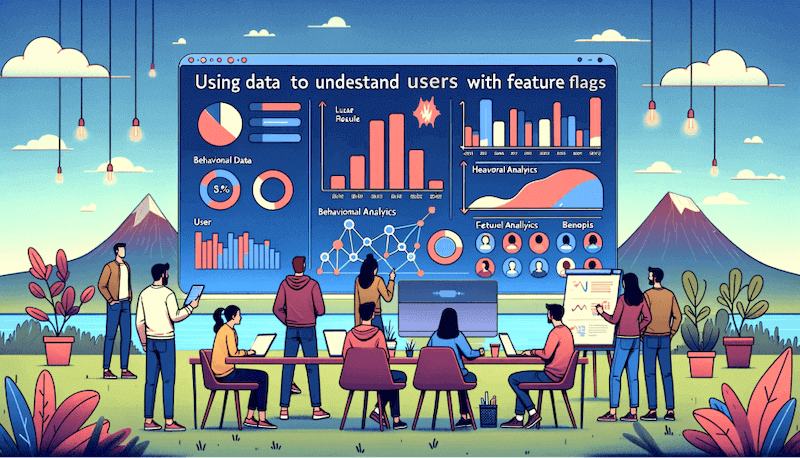The Psychology Behind Feature Management - Understanding User Behavior
The success of a software product often hinges on how well its features resonate with users. However, the path of innovation is often laden with unpredictability and unforeseen user reactions, making feature management a dance between meeting expectations and introducing novelty. As users continue to raise the bar of expectations, understanding the psychology that drives their interactions with new features becomes a cornerstone for delivering superior user experiences.
The realm of feature management is where this understanding transforms into actionable insights, opening a rich avenue for exploring how users engage with applications. This leads to a more intuitive, user-centric approach to feature delivery by using those experiences to iterate and shape how features are optimized. Here, we explore how understanding the psychology behind feature management can lead to more effective feature rollout strategies.

The Intersection of Psychology and Feature Management
Picture this: You're about to launch a groundbreaking feature, one that's taken months of development and meticulous planning. The code is ready, and the design is flawless, but will your users love it as much as you do? Will the latest update be bug-free, or would it chase users to a competitor? These questions keep developers and product managers awake at night, and the answer lies at the intersection of psychology and feature management.
The truth is that understanding user behavior is key to effective feature management. Feature management isn't just about having a switchboard for toggling functionalities on and off or controlling the availability, performance, and usability of various features within a piece of software. It's an art and a science that, when married with a deep understanding of user behavior, can significantly enhance feature delivery, user satisfaction, and overall product success.
In essence, psychology plays a significant role in optimizing feature management. It's about ensuring that your software not only functions flawlessly but also genuinely connects with your users, creating an experience that leaves them delighted and loyal. This convergence of technology and human behavior marks the heart of effective feature management.
User Expectations: How Modern Users Perceive and Interact with New Features
Modern users often have expectations regarding the performance, functionality, and utility of new features based on their past experiences, marketing communications, or comparisons with other products in the market. These expectations can significantly influence their initial interactions and adoption of features or changes. As such, understanding user expectations is an investment that yields substantial returns in the form of user satisfaction and retention, ultimately impacting the likelihood of feature adoption.
This confluence of psychology and effective feature management helps align new features with users' expectations by tuning into users' minds to understand how these users perceive and interact with new features and continually refining features to meet and exceed their expectations. For example, some users prefer features that are intuitive and require little to no learning curve. By understanding this psychology, companies can make informed decisions about which features to include, how to design them, and how to introduce them to users.
The question, then, is, what strategies can one employ to meet user expectations better, thereby driving positive user experiences and successful feature rollouts?
Behavioral Analytics: Using Data to Understand User Interactions with Feature Flags

When you combine the observational power of behavioral analytics with the control provided by feature flags, you get a robust toolkit that is like having a magnifying glass that lets you closely examine how users interact with your features and sheds light on usage patterns, enabling a data-driven approach to decision-making. Feature flags let you launch new features and change your software configuration without (re)deploying code. For instance, you can use feature flags to introduce a new feature to a small, select group of users initially to gain feedback and then use behavioral analytics to watch and observe how these users interact with it. Do they use the new feature? Do they run into issues? Do they seem to like it? This way, if there's a problem with the new feature, it can be fixed before rolling it out to everyone, minimizing potential negative impacts. You can manage all your feature flags in a central dashboard with cloud-hosted feature flag providers like ConfigCat.
These insights, when funneled through the lens of monitoring and analytic tools via feature flags, pave the way for fine-grained control over feature releases, tailored user experiences, and ultimately, enable an iterative process where features are refined based on real-world user feedback, paving the way for software that's in tune with users and their expectations. By leveraging feature flags, developers can gain invaluable insights into user interactions that are essential for effective feature management. This, in turn, acts as the catalyst for making informed feature management decisions by not only functioning as technical levers for user-centric feature development but also as instruments of behavioral analytics for understanding users' expectations with the features controlled by these flags.
An example is when teams have to decide between 2 variations of a feature or implementation. In such scenarios, they can employ A/B testing, where two versions of a feature are presented to different groups of users to see which one performs better. Feature flags control which version a user sees and provide analytic data on how users interact with each variation. By monitoring and analyzing this data, teams can gauge their adoption and performance to help understand how these users interact with them. It answers questions like do they use each as intended? Do they seem to like one more? Are there any issues or bugs with either? This union enables a more data-driven approach to releasing and refining features, ensuring that the software evolves in a way that meets users' needs and expectations while minimizing risks.
Conclusion

As organizations move forward in the ever-evolving terrain of software development, integrating psychological insights into feature management strategies will not only enhance user satisfaction but also significantly contribute to the software's success in a competitive market. Feature flags enable companies to create a more intuitive, adaptive, and successful software experience through meticulous analysis of user behavior and a data-driven approach to software delivery.
Understanding user behavior is not a mere consideration when developing features but a necessity in effective feature management. It's about building a bridge between user expectations and feature innovation, a bridge sturdy enough to carry the weight of novel features without crumbling under user scrutiny.
Curious about the capabilities of feature flags for your apps? ConfigCat provides a free-tier account tailored for low-volume use cases, ideal for experimenting with feature flags. Deploy any time, release when confident.
For more feature flagging goodies, stay connected to ConfigCat on X, Facebook, LinkedIn, and GitHub.
